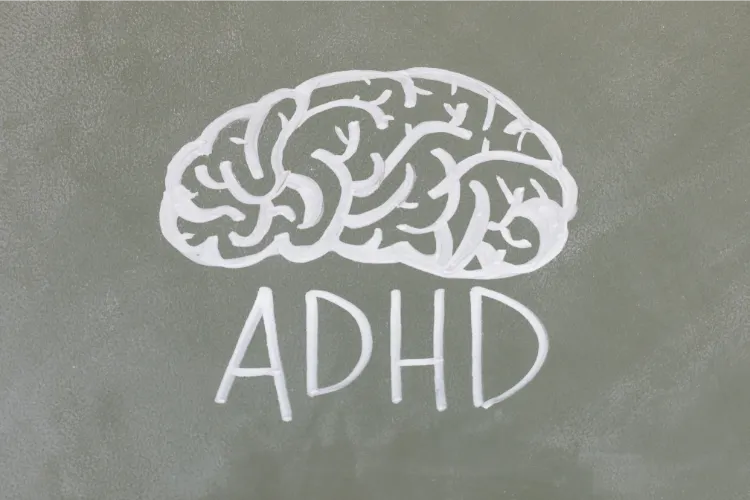Understanding ADHD: Symptoms, Diagnosis, and Management

ADHD, or Attention Deficit Hyperactivity Disorder, is a neurological condition that affects approximately 11% of children and 4% of adults in the United States. Despite its prevalence, ADHD can often go undiagnosed or misdiagnosed, which can lead to challenges in academic, social, and professional settings.
In this article, we will discuss the history of ADHD, its symptoms, and how it is diagnosed. We will also explore strategies for managing ADHD and supporting those who have been diagnosed with it.
The History of ADHD
The first documented reference to a condition resembling ADHD was made by a physician named Sir Alexander Crichton in 1798. Crichton described a cluster of symptoms, including restlessness, inattention, and impulsivity, that he observed in his patients. However, it wasn't until the late 19th century that the term "hyperkinetic impulse disorder" was first used to describe a similar set of symptoms.
In the mid-20th century, researchers began to focus on the condition in children, and the term "hyperactive child syndrome" was coined. It wasn't until the 1980s that the name "Attention Deficit Disorder" (ADD) was used to describe the condition. This name was later expanded to "Attention Deficit Hyperactivity Disorder" (ADHD) to reflect the fact that many individuals with the condition also experience hyperactivity and impulsivity.
Today, ADHD is recognized as a neurodevelopmental disorder that affects individuals of all ages. It is typically diagnosed in childhood, but many individuals may not receive a diagnosis until adulthood.
Symptoms of ADHD
The core symptoms of ADHD are inattention, hyperactivity, and impulsivity. These symptoms can manifest differently depending on the individual and their age. Some individuals may have predominantly inattentive symptoms, while others may have predominantly hyperactive-impulsive symptoms. Some may experience a combination of both.
Inattention symptoms may include:
- Difficulty sustaining attention on tasks or activities
- Forgetfulness and disorganization
- Poor listening skills
- Avoidance of tasks that require sustained mental effort
- Losing or misplacing items
Hyperactivity symptoms may include:
- Constant fidgeting or squirming
- Difficulty remaining seated in class or other settings
- Excessive talking
- Interrupting others
- Running or climbing excessively
Impulsivity symptoms may include:
- Acting without thinking
- Difficulty waiting for one's turn
- Blurting out answers or comments without raising one's hand
- Engaging in risky behavior without considering the consequences
It is important to note that not all individuals with ADHD will exhibit all of these symptoms. Additionally, some symptoms may be more prominent in certain settings (e.g., school vs. home).
Diagnosing ADHD
Diagnosing ADHD involves a comprehensive evaluation of the individual's symptoms and their impact on daily functioning. The diagnostic process typically involves a combination of methods, including:
- A thorough clinical interview with the individual and their family
- Behavioral observations in various settings
- Rating scales completed by the individual and/or their family and teachers
- A review of medical and educational records
The diagnostic criteria for ADHD are outlined in the Diagnostic and Statistical Manual of Mental Disorders (DSM-5). To meet the criteria for a diagnosis of ADHD, an individual must exhibit a certain number of symptoms of inattention, hyperactivity, or impulsivity.
Additionally, these symptoms must be present before the age of 12 and have a significant impact on the individual's functioning in multiple settings.
It is important to note that there is no single test or "ADHD test" that can definitively diagnose ADHD. Rather, the diagnosis is based on a comprehensive evaluation and consideration of the individual's symptoms and history.
Managing ADHD
There is no cure for ADHD, but there are many strategies and interventions that can help individuals manage their symptoms and improve their quality of life. Some common strategies include:
Medication:
Stimulant medications such as Ritalin and Adderall are often used to treat ADHD. These medications can help improve focus, attention, and impulse control.
However, they may also have side effects and are not suitable for everyone.
Therapy:
Behavioral therapy can help individuals with ADHD develop strategies for managing their symptoms and improving their daily functioning. Cognitive-behavioral therapy (CBT) and mindfulness-based interventions have been found to be particularly effective.
Lifestyle changes:
Exercise, a healthy diet, and adequate sleep can all help manage ADHD symptoms. Additionally, individuals with ADHD may benefit from strategies such as breaking tasks into smaller, more manageable steps, using visual cues to stay organized, and minimizing distractions.
Support:
Support from family, friends, and mental health professionals can be an important part of managing ADHD. Support groups and online communities can also be helpful for individuals with ADHD and their loved ones.
Conclusion
ADHD is a common neurological condition that can have significant impacts on an individual's daily functioning. While there is no cure for ADHD, there are many strategies and interventions that can help individuals manage their symptoms and improve their quality of life. If you think you or a loved one may have ADHD, it is important to seek an evaluation from a qualified mental health professional.
